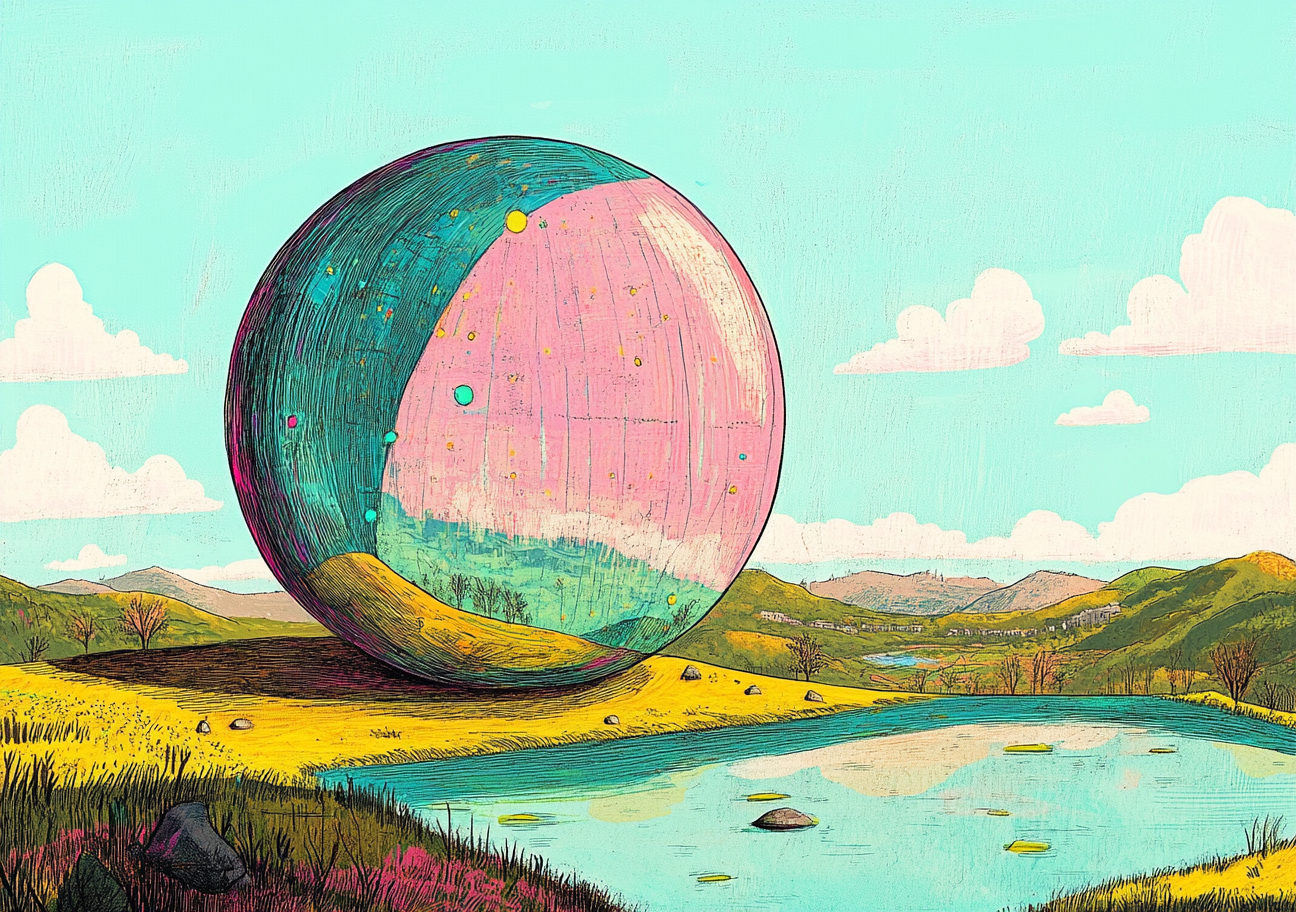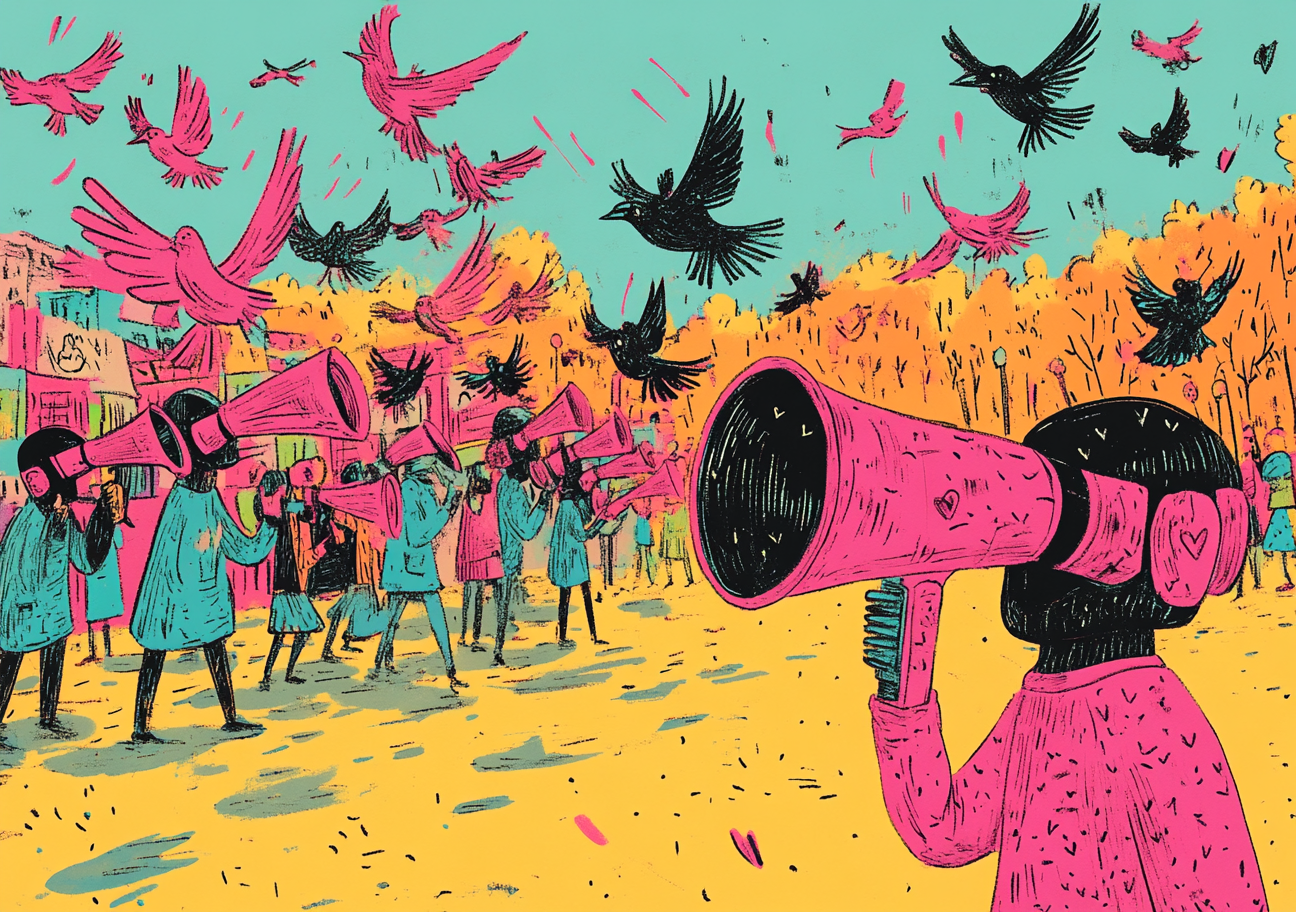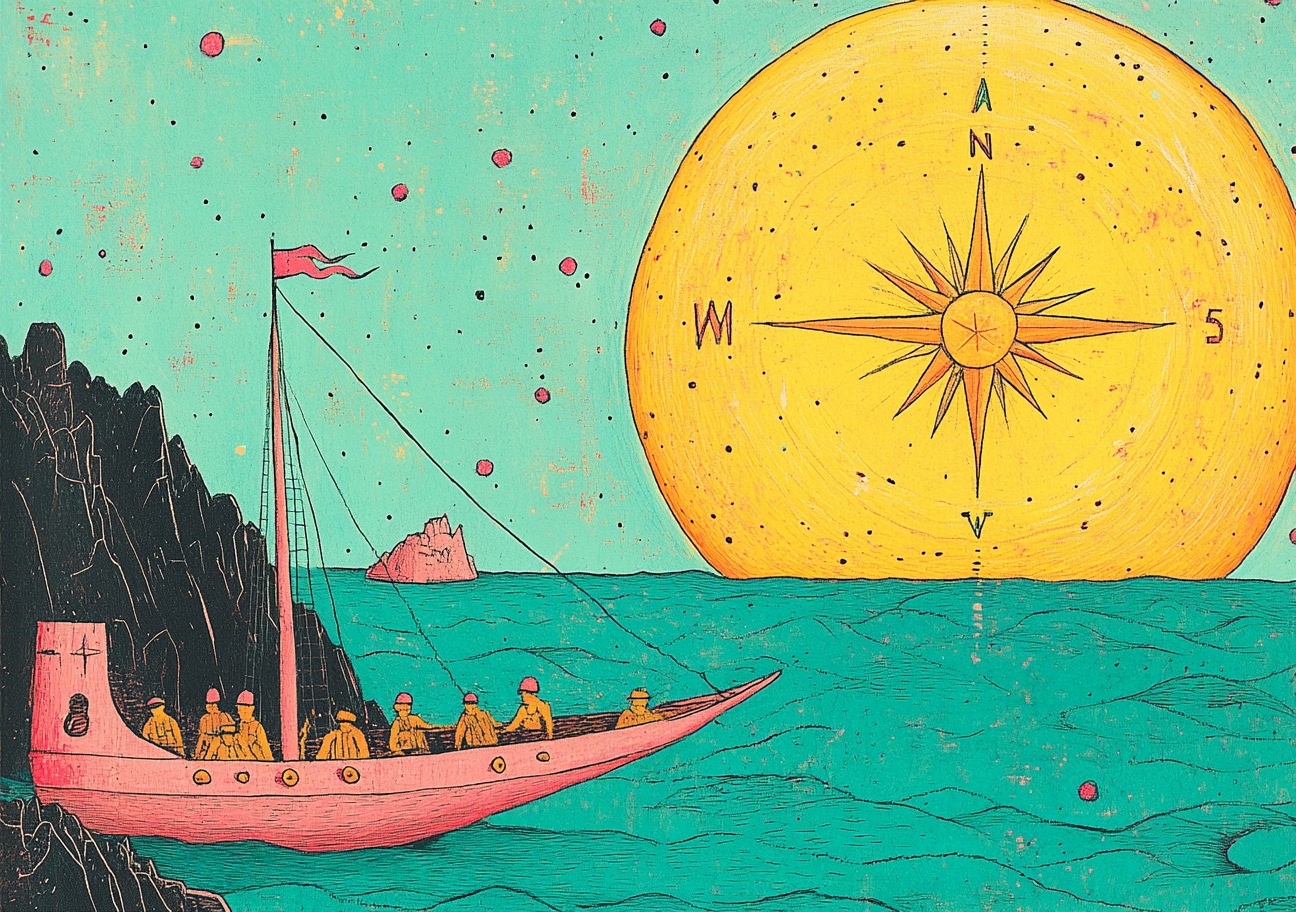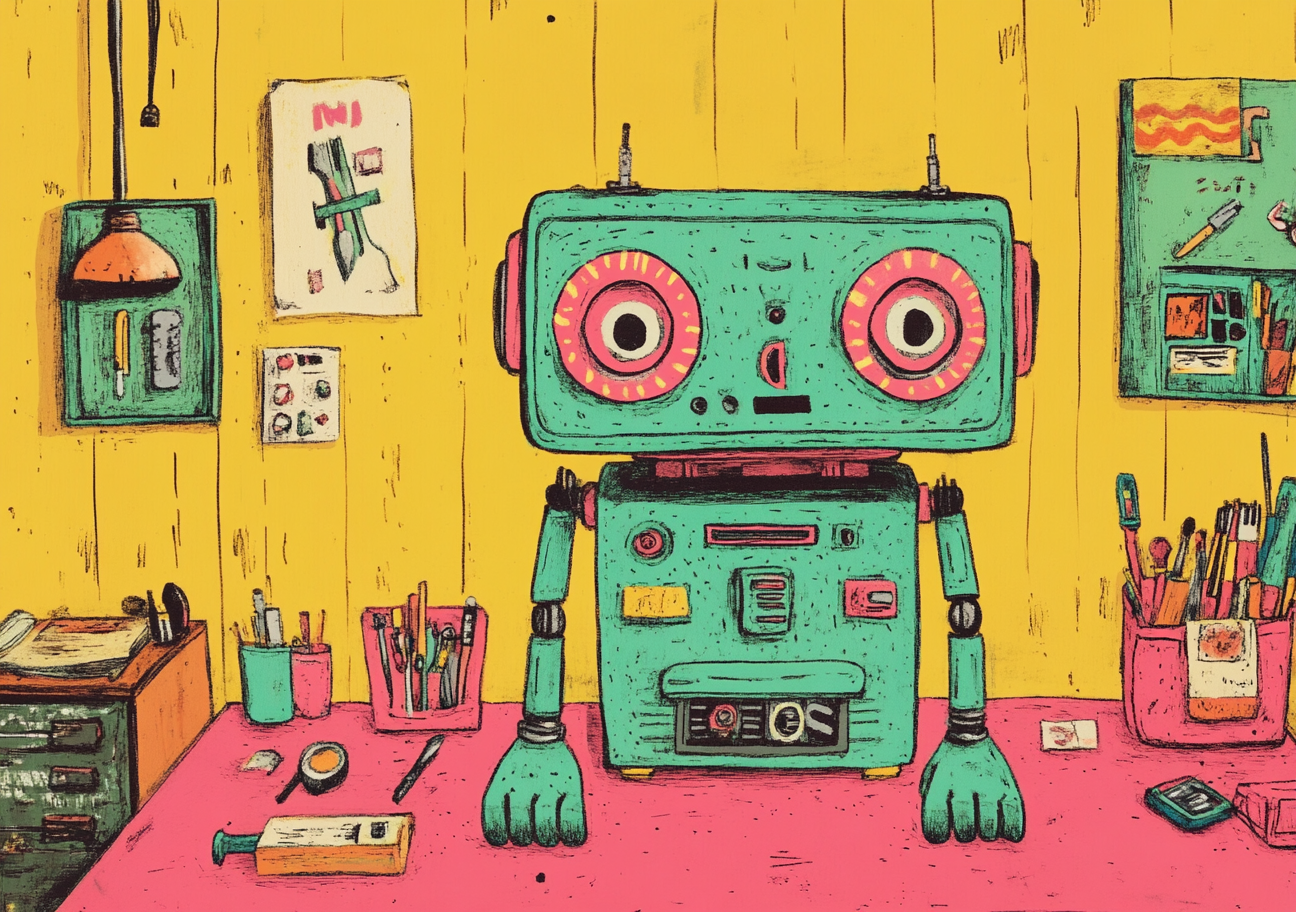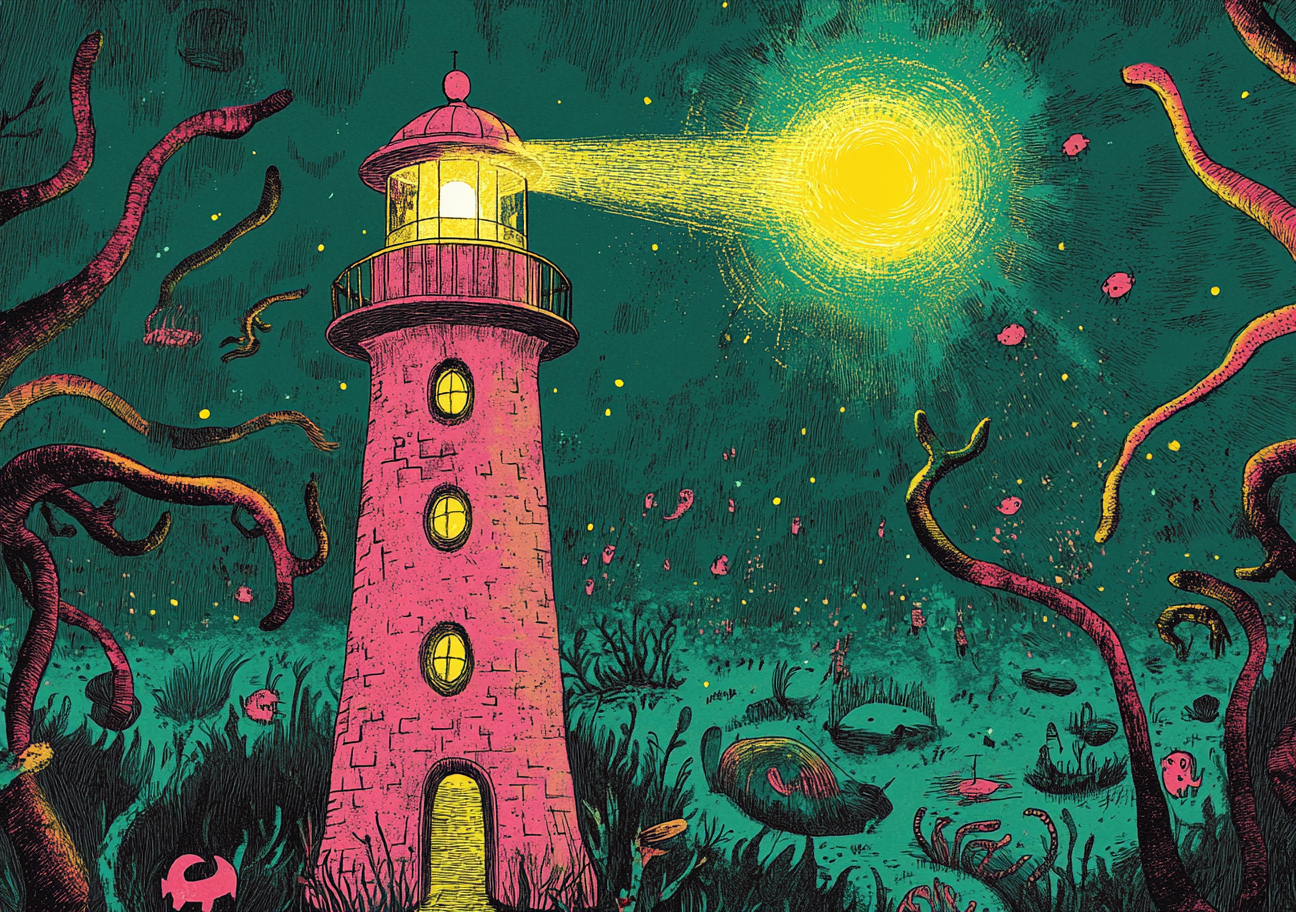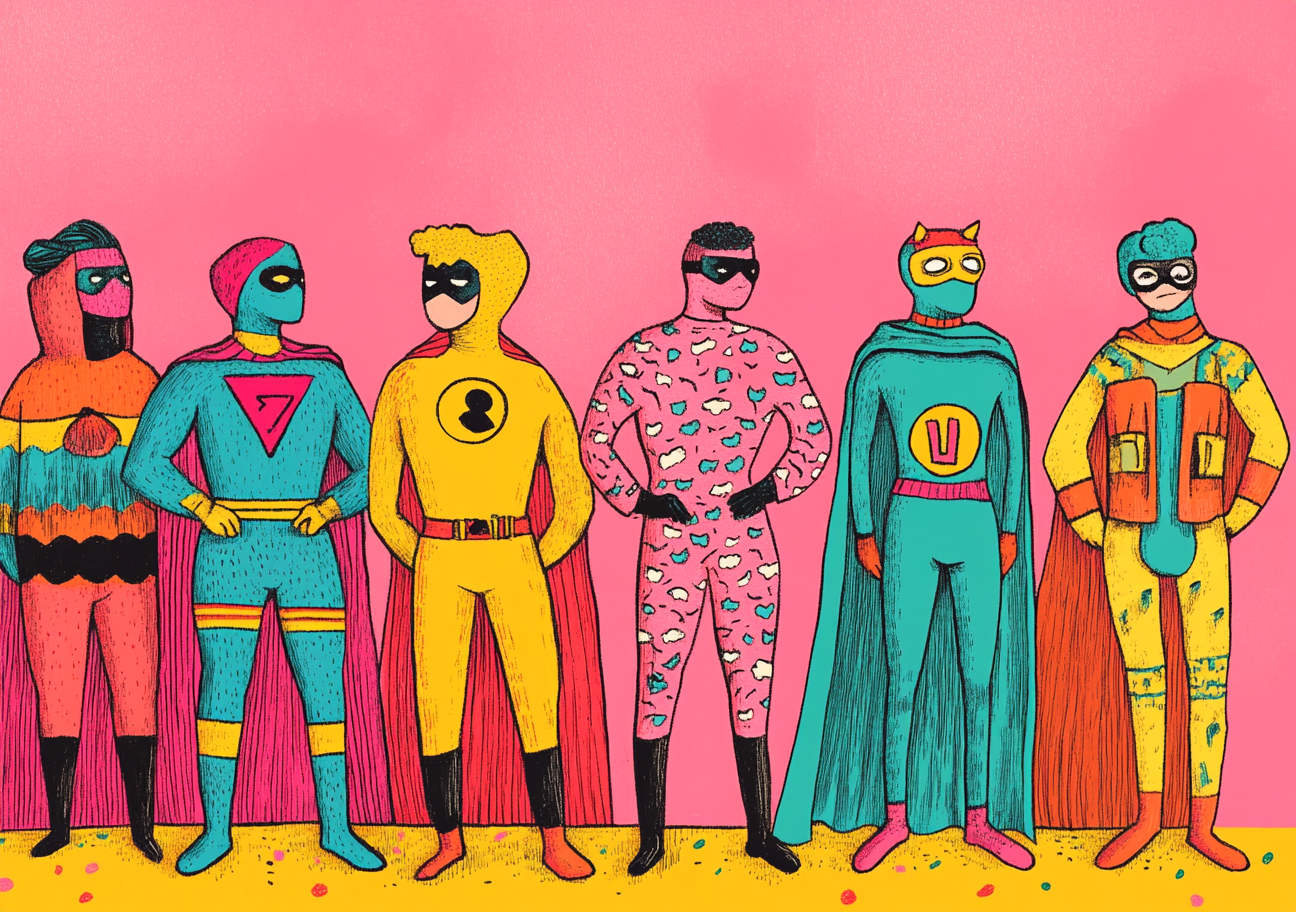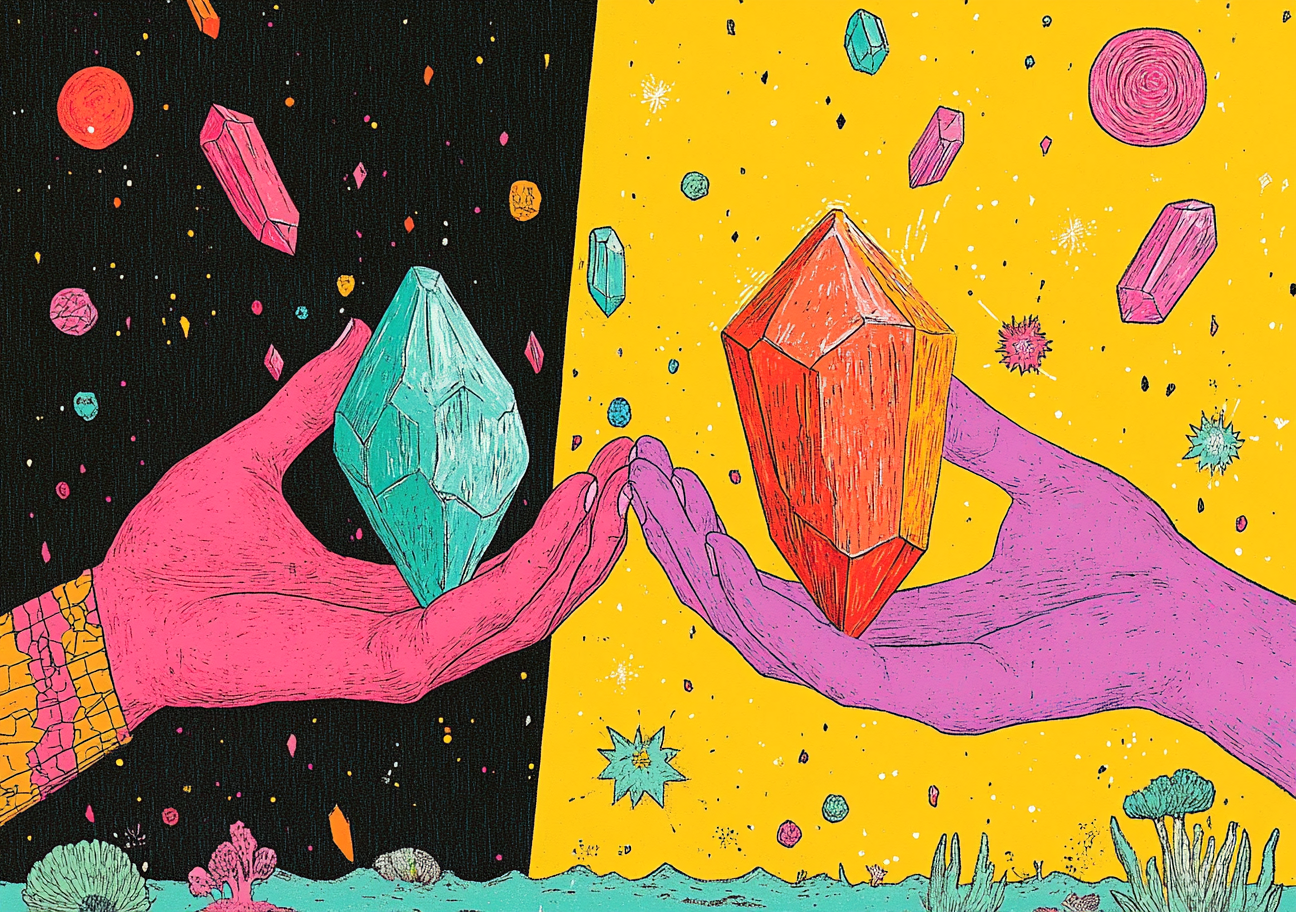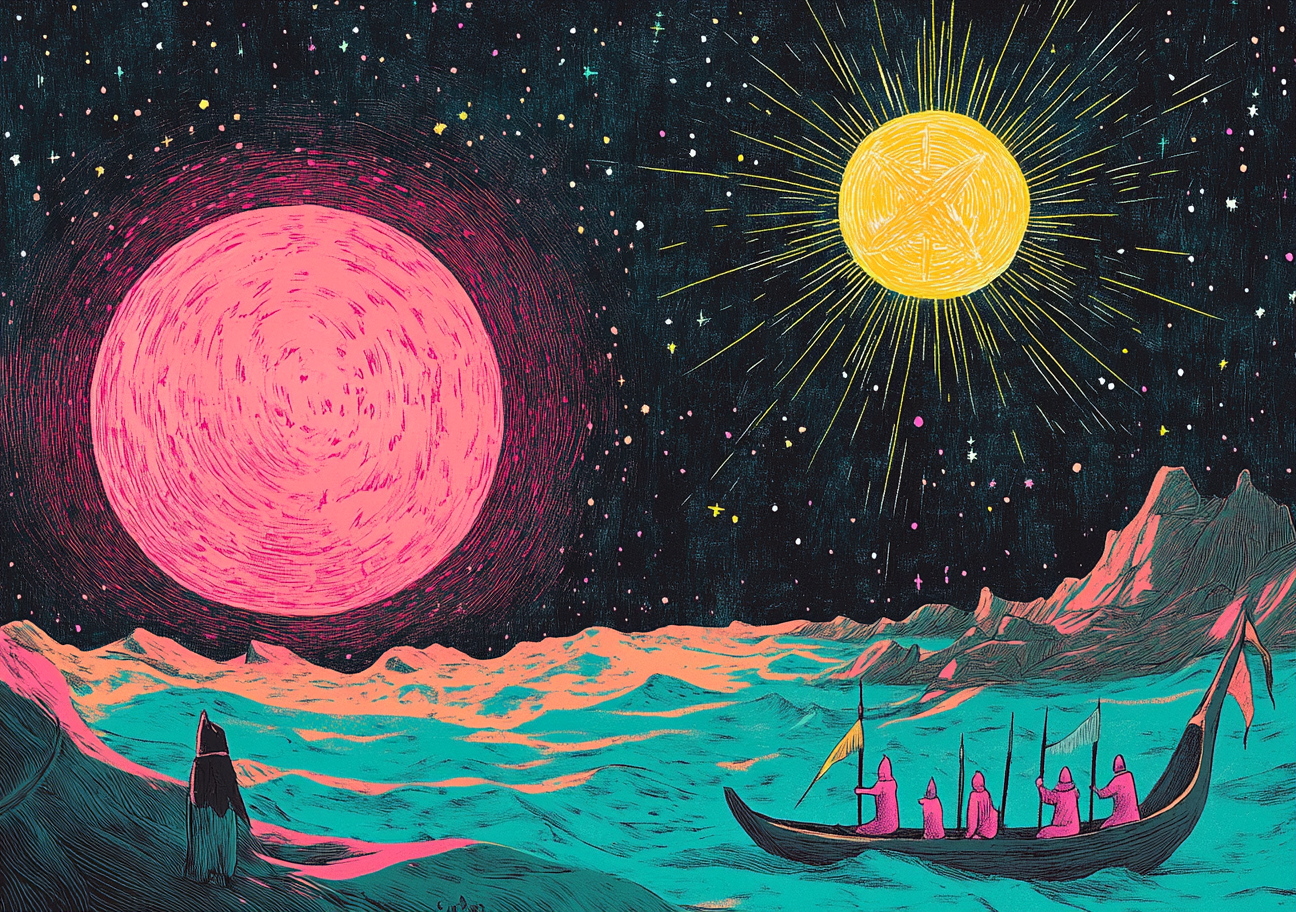Visiontype
Visiontype is a visual representation of product’s idealized future state.
Every company wants to move fast and innovate, but misalignment slows everything down. Most of us have experienced teams working in silos, shifting priorities, and the frustration of struggling to get things done. More often than not, it all comes down to a lack of clear vision or shared understanding.
If you've ever tried to get everyone excited about future plans, you know how challenging it can be. Sometimes, it's a bold leap that affects multiple teams. Other times, it's simply a new way of working. Big or small, change is uncomfortable - most people hesitate when faced with something new.
But what if there was a way to align everyone, build engagement, speed up decision-making, and execute smoothly? That's where the visiontype comes in - a prototype that is meant to show the persuasive story of a possible future.
What challenges does this help with?
I'd put Visiontype on your radar and read on, if you're facing these challenges:
The most common issues within the organization. You probably won’t be able to get rid of this, once you have a scale, but you can (and should) try to fight it as hard as possible. Learn more
The most common issues within the organization. You probably won’t be able to get rid of this, once you have a scale, but you can (and should) try to fight it as hard as possible. Learn more
Low innovation means that a company fails to deliver new features or improvements that meet customer needs, leading to decreased satisfaction and loyalty. Learn more
Low innovation means that a company fails to deliver new features or improvements that meet customer needs, leading to decreased satisfaction and loyalty. Learn more
Low transparency means people don’t know what product teams are working on, and whether they’re generating impact or not. Learn more
Low transparency means people don’t know what product teams are working on, and whether they’re generating impact or not. Learn more
Distrust between tech and business teams happens when these groups don't communicate well, leading to misunderstandings and slowed project progress. Learn more
Distrust between tech and business teams happens when these groups don't communicate well, leading to misunderstandings and slowed project progress. Learn more
Failed transformations occur when attempts to adapt or improve a product or process result in setbacks or do not achieve the desired outcomes. Learn more
Failed transformations occur when attempts to adapt or improve a product or process result in setbacks or do not achieve the desired outcomes. Learn more
Why should you care?
If you lead a product, design, or engineering team, you've probably experienced the chaos of misalignment firsthand. Without a shared vision:
- Teams work on disconnected priorities,
- Leadership struggles to get buy-in for bold moves,
- Products evolve in a fragmented way.
A visiontype fixes this by bridging the gap between vision and execution. It brings clarity, ensuring that teams aren't just busy - they're busy building the right things. Without a visiontype, organizations:
- Spend months debating priorities instead of building,
- Struggle to understand how each function can contribute to the shared success,
- Ship fragmented experiences due to lack of cohesion,
- Lose top talent who crave clarity and purpose.
In short, a visiontype saves time, reduces confusion, and keeps everyone moving in the same direction - without the need for 17 alignment meetings per week.
What is visiontype?
Most people struggle to connect NOW with the FUTURE - especially when the future is years away.
There are many ways to communicate a future state: inspiring speeches, sleek presentations, competitor benchmarks, and lengthy documents. The problem? They're all open to interpretation. The future is hard to explain in words alone.
This is where a visiontype comes in. Because, as the saying goes, one picture is worth a thousand PowerPoint slides.
So what is the visiontype (sometimes called "concept prototyping")? In short, it is a strategic prototype. In a more extended version, it is a tangible, interactive representation of a company's future state and a key tool for communication between the product team and the whole executive team. It helps the executive to see both the power and the limitations of their ideas, often giving rise to new and better insights (see ). It helps to think about it as a marketing teaser or a launch video - you want to showcase the most interesting parts.
Here are some visiontypes examples:
- Microsoft Copilot: https://www.youtube.com/watch?v=zy_dHJcAAho
- Invision Studio: https://vimeo.com/238515862
At its core, a visiontype emerges from the vision (see ) and inspires roadmaps (see ) and execution:
- Aligns teams by making the future feel real,
- Reduces ambiguity by translating abstract strategies into concrete artifacts,
- Accelerates decision-making by helping teams understand what matters most.
Strategic prototype vs prototypes
A visiontype is a prototype, but not just any prototype. So, what makes it different? Let's break it down.
- Scope - the big picture
While a regular prototype focuses on one product or feature, a visiontype zooms out. It connects multiple initiatives, often tying into a larger product strategy. Think of it as a movie trailer for the future of your company - highlighting the most exciting parts without getting bogged down in the details. - It's not a spec - it's a story
A visiontype isn't a blueprint for execution - it's a narrative of possibilities. It covers only the essential big ideas, not every single detail. No need to panic about button placements or API structures just yet. The key is to set the direction, not dictate the entire journey. - Timing - it happens early in the process
Here's where it gets counterintuitive: a visiontype usually comes before an actual project kicks off. Wait - aren't we supposed to analyze everything first? Doesn't this sound a bit like waterfall planning? Not really. Since a visiontype does not strictly dictate a roadmap, it evolves with insights and iteration. It's more like a sketch on a napkin than a rigid blueprint. The goal is to inspire, align, and kickstart meaningful discussions - long before teams dive into execution. Plus it is not created in isolation, and it should have a strong foundation in insights.
How to implement it step-by-step
- Add
Visiontype
to your deck /
:
- Communicate the start of work on the practice to the team.
- Assemble strike team to work on the practice.
- First, you need to define the vision. If you don't know where you're going, no prototype will help. You can learn how to do that here (see ).
- Involve the most capable designer and create a tangible prototype.
Work with your best designers to create an interactive prototype (if you're new to prototypes, see: ). If possible, record interactions and turn them into a short narrative-driven video. A well-told story can make a visiontype feel more real than any slide deck ever could.
Make sure what you're doing is detailed enough to feel real but flexible enough to iterate. Here are a few tips that may help you:
- Create a storyboard that shows scene by scene what you want to show
- Focus on storytelling (what does the future look like, and how do people interact with it?)
- Show how different elements connect, rather than over-focusing on individual screens.
- Simplify interface elements, that are not key to the vision
- Align leadership and teams
Share the visiontype with executives first. While it's tempting to go straight to product teams, you need exec buy-in first. Otherwise, you risk bringing confusion to the teams.
Meet with each stakeholder individually (yes, it takes time) before the big sign-off meeting. This allows you to introduce the vision in a way that resonates with them - framing it around what they care about. It also helps you gather input while avoiding the group dynamics and politics that can derail good ideas.
Tip: Identify the key people you need to bring on board. Who are your allies? Who will challenge your vision? And who are the influencers - those who, once convinced, can help rally others?
- Gather feedback and refine
No one gets it perfect on the first try. Iterate based on feedback. You should avoid selling the idea too much at this point and instead listen very carefully to what they're reacting to and how they're reacting.
- Onboard the teams
The heavy lifting will probably be done by the senior executives, as they are responsible for the vision and have the authority to implement it. The visiontype you created will be a great aid in deciphering the tangible meaning of the vision presented.
- Use it as a helper when making decisions
What I love about visiontype is that later, you can come back to the prototype and see if increments in the product move the company toward the vision, not away from it.
PS: If you need help with implementing the Visiontype, contact me. I have 20+ years of commercial experience working with bigger and smaller companies, upgrading product, design, and engineering teams to the next level. I can also connect you with experts on this subject.
When to use visiontype
After research, when there's a clear problem and potential solutions
A visiontype is most valuable when you can clearly articulate why this vision matters. If you can't
make a strong case for its importance to your team and stakeholders, it's not worth the effort.
When visions are ambiguous or competing
If different teams have conflicting ideas about the future, a visiontype can align everyone by
visualizing multiple possibilities and helping teams converge on a shared direction.
Before starting detailed design or development
A visiontype should come early in the process - before diving into detailed design or development.
It sets the stage, ensuring alignment before commitment.
Common mistakes and how to avoid them
Even the most exciting visiontype can run into trouble if certain pitfalls aren't addressed. Here are some of the most common mistakes - and how to dodge them before they derail your efforts.
1. Mistaking the visiontype for a fixed plan
Some people will assume it's just another "nice-to-have" presentation that doesn't require action, while others will assume it's a fixed roadmap. Product managers and engineers, in particular, tend to latch onto details:
- PMs want hard metrics and goals. Often before the vision is fully fleshed out.
- Engineers start breaking it down into story points before a single decision has been finalized.
Prioritize clarity over perfection
A visiontype isn't a spec document - it's a tool for alignment and inspiration. Focus on the bigger
picture rather than getting lost in details too soon. Identify which parts of the vision are hardest
to grasp and make them clear. Which teams need to see how everything connects? Show them a high-level
concept rather than a pixel-perfect design.
Iteration is key - especially with hands-on executives who like to refine and tweak. The visiontype should and will evolve, helping teams and leadership spot weak ideas early, before they consume months of effort.
2. A visiontype that doesn't address business needs
A visiontype is supposed to paint a picture of the future, but sometimes, it misses the mark on what actually makes the business successful. A beautiful, inspiring concept is useless if it doesn't connect to real-world goals.
Bring visiontype creators into the vision-defining process
Too often, the people designing the visiontype are handed a pile of meeting notes and expected
to "make it work." That's like giving a chef a list of ingredients but no recipe. To build something
meaningful, they need context: business goals, market trends, competitive landscape, customer needs,
and tech capabilities. Get them in the room early, or risk ending up with a flashy prototype that
solves the wrong problem.
3. Taking forever to make the vision tangible
A visiontype that drags on for months? Red flag. If it's taking too long to create, something is broken in the process. The visiontype should highlight key elements that will be critical in the years ahead - not attempt to solve every future challenge in one go.
Aside from the obvious problem (blocking your best people for too long), a drawn-out visiontype effort kills momentum. The longer it takes, the harder it is to maintain alignment. After a few months, teams will move on to other initiatives, and some of those initiatives might directly conflict with the visiontype's intended direction. Without clarity, people create their own paths and not always in the same direction.
Set deadlines and use an iterative process
Think sprints, not marathons. A visiontype isn't supposed to be perfect - it's supposed to be
directional. Build fast, test ideas, and refine as you go. This approach helps separate great
ideas from bad ones early on, instead of realizing six months later that you've been polishing
a dud.
A visiontype isn't meant to be set in stone, and it's not a finished spec, so don't treat it like
one. Accept that some ideas will fail fast. That's part of the process. Better to spot flaws early
than after months of over-investment.
Without a clear timeline, you risk ending up with a half-baked strategic prototype that took too long to build and isn't ready when leadership needs it.
4. Poor communication and stakeholder buy-in
While the actual prototype stage of a visiontype might only take a few weeks, the discussions and decisions leading up to it can stretch much longer. The problem? If key stakeholders (especially those whose departments will be directly impacted) aren't kept in the loop, expect pushback. And not the productive kind. When stakeholders feel blindsided by a vision they weren't consulted on, they'll challenge it hard. They might even actively resist it (see ).
Co-create with stakeholders
Identify the people most affected by the visiontype and get them involved early. These champions will help communicate the vision when you're not in the room. Think of it as a snowball effect - get the right people on board, and they'll help spread the message.
When rolling out the visiontype, prepare product teams by offering guidance on how to break it down into actionable steps. Remember, alignment isn't automatic - it requires deliberate effort.
Of course, key stakeholders should already know the vision, as they participated in the vision definition. But as mentioned in the intro, there may be a spectrum of possible interpretations.
Important note: co-creating doesn't mean letting every department rewrite the vision - it means bringing them along for the ride so they understand and support the direction.
5. Focus on the wrong elements
A common trap when building a visiontype? Getting way too deep into the details. It's tempting to start perfecting every little piece - thinking through micro-interactions, pixel-perfect designs, and even backend API structures before the big picture is fully agreed upon. That's like decorating a house before the walls are up. The goal isn't to create something ready for development next week. It's to illustrate how different elements work together. Whether that's multiple products, services, or even entire departments.
Focusing too much on details at this stage creates something overly prescriptive, leaving no room for iteration as the strategy evolves.
Keep the focus on the key story elements
Ask yourself: which parts of the vision are hardest to grasp? Focus on making those clear. Which teams need to see the bigger picture to work together more effectively? Inspire them with a high-level concept instead of a pixel-perfect UI.
How to convince your boss to adopt visiontype
- Frame it as a low-cost risk reducer
Executives all want the same three things: more revenue, lower costs, and fewer expensive mistakes. The good news? A visiontype helps with all three. By providing a low-commitment, high-impact way to explore strategic directions, it minimizes the risk of sinking resources into the wrong initiatives. Instead of debating ideas in endless meetings, teams can see and interact with the future before making major decisions. - Show examples from successful companies
If there's one thing executives love, it's success stories (especially from top-tier companies). Many leading organizations use visiontypes to align teams and speed up execution. Find relevant case studies or examples from respected brands to demonstrate how visiontypes have helped companies de-risk decisions, drive innovation, and gain buy-in faster. - Start small and show quick wins
Never used a visiontype before? No problem. Prove its value on a smaller scale first. If you're running a design team, one easy way to do this is by treating it like an internal hackathon. Identify a major business challenge that leadership is already focused on and create a quick prototype that offers a tangible, interactive solution. When leaders see the future instead of just hearing or reading about it, they'll be hooked - trust me.
Closing thoughts
Misalignment slows everything down, turning great ideas into endless debates. A visiontype cuts through the noise, giving organizations a clear, tangible way to rally around a shared future and execute with confidence. If you want to accelerate decision-making and build with greater clarity, it's time to start using visiontypes.
Want to work on this?
Want to work on Visiontype in your team or company?
Your deck stores the challenges and solutions you're working on, tracks your progress, and recommends other cards you can adopt.
Linked cards
Here are other practices related to Visiontype:
Product vision tells a story about how would you like your product to look like in 3-5 years. Learn more
Product vision tells a story about how would you like your product to look like in 3-5 years. Learn more
Prototypes are early models or samples of a product that allow teams to test ideas, gather feedback, and make improvements before final production. Learn more
Prototypes are early models or samples of a product that allow teams to test ideas, gather feedback, and make improvements before final production. Learn more
True Product Designers are creative problem-solvers who combine user research, design expertise, and business strategy to craft meaningful products. Learn more
True Product Designers are creative problem-solvers who combine user research, design expertise, and business strategy to craft meaningful products. Learn more
Product strategy provides the logical sequence of big bets (projects, value streams) that will take you to Product Vision. Learn more
Product strategy provides the logical sequence of big bets (projects, value streams) that will take you to Product Vision. Learn more
Company mission answers why do you exist as a company. Learn more
Company mission answers why do you exist as a company. Learn more
A design system is a collection of reusable components, guidelines, and standards that helps teams create consistent and user-friendly products efficiently. Learn more
A design system is a collection of reusable components, guidelines, and standards that helps teams create consistent and user-friendly products efficiently. Learn more
Your customers are your business therefore, obsessing over them must be at the core of your culture in order to succeed. Learn more
Your customers are your business therefore, obsessing over them must be at the core of your culture in order to succeed. Learn more
Empowered Autonomous Teams can decide what to build to solve they problem they're being assigned, without any excessive oversight. Learn more
Empowered Autonomous Teams can decide what to build to solve they problem they're being assigned, without any excessive oversight. Learn more
Double Diamond is a design process with four phases: Discover, Define, Develop, and Deliver, to solve problems creatively. Learn more
Double Diamond is a design process with four phases: Discover, Define, Develop, and Deliver, to solve problems creatively. Learn more
The North Star metric is a single KPI that directly reflects the core value a product delivers to its customers. Learn more
The North Star metric is a single KPI that directly reflects the core value a product delivers to its customers. Learn more
Hope that's useful!
